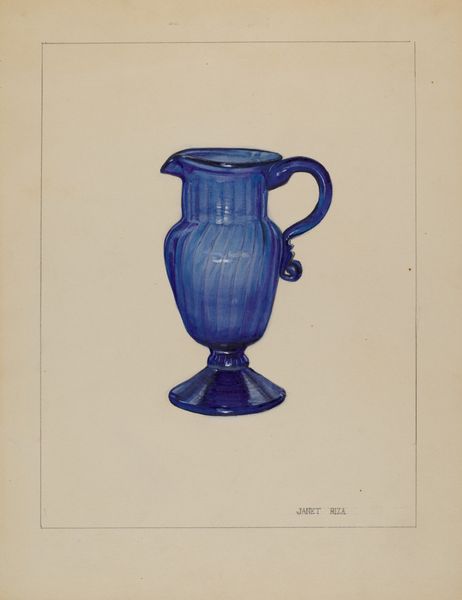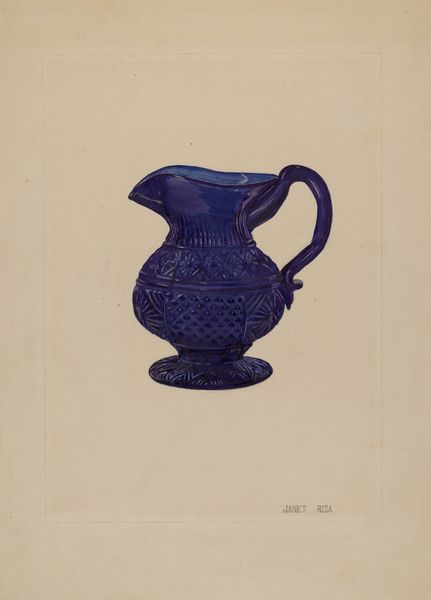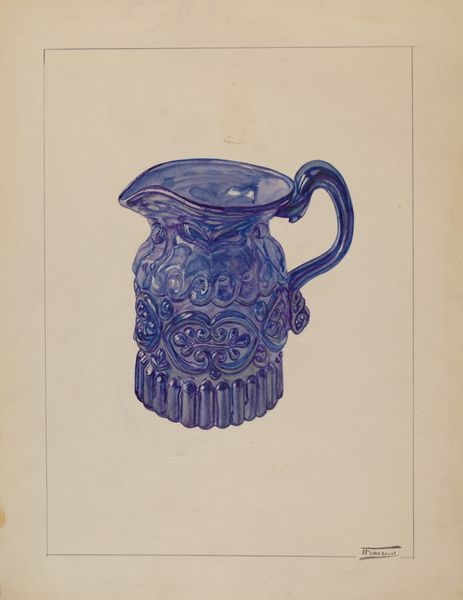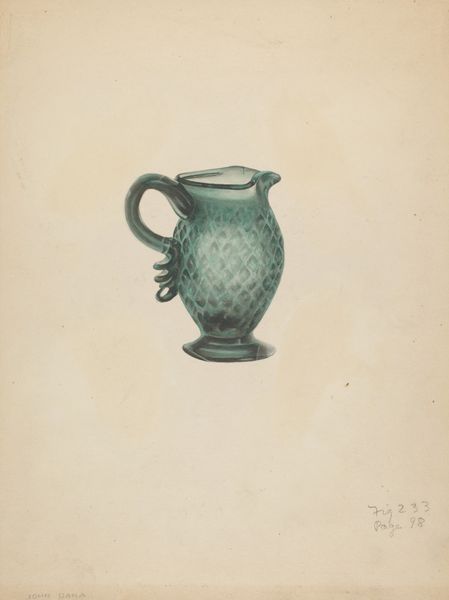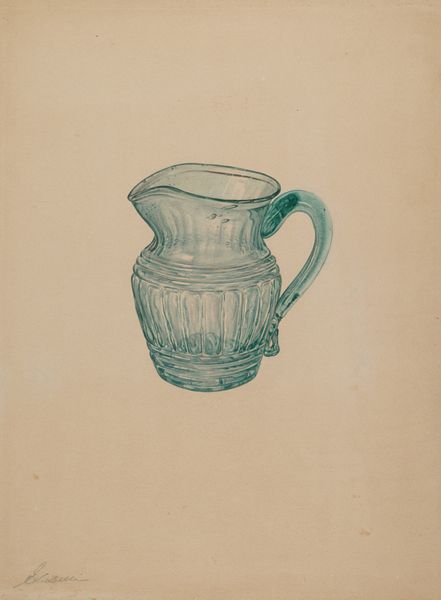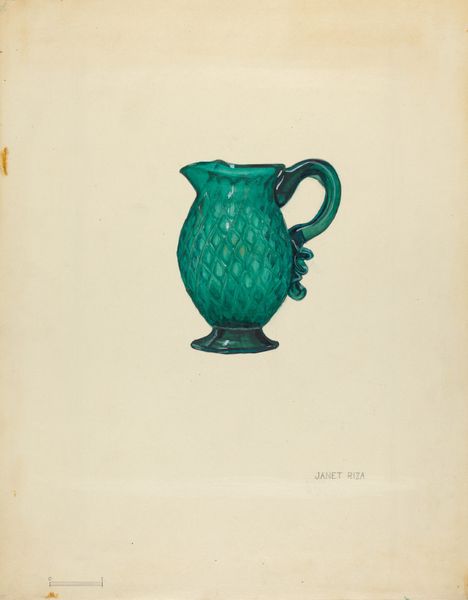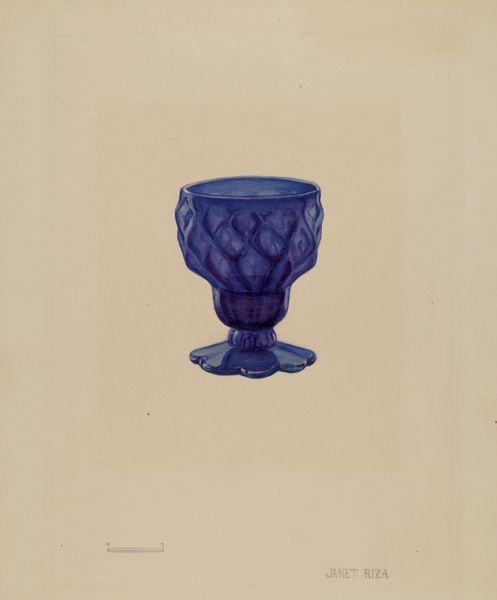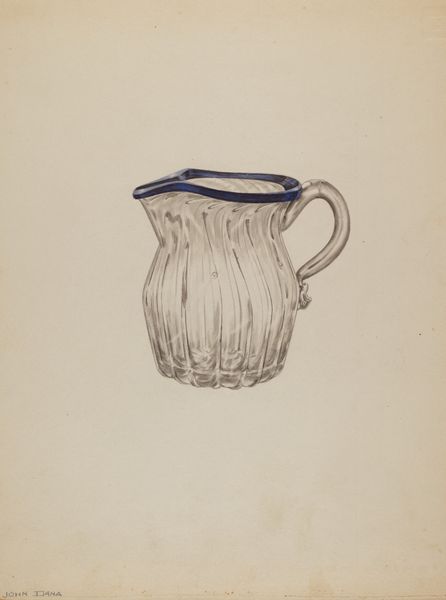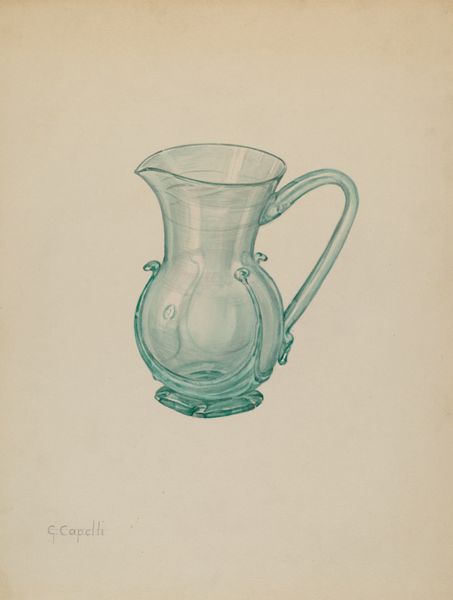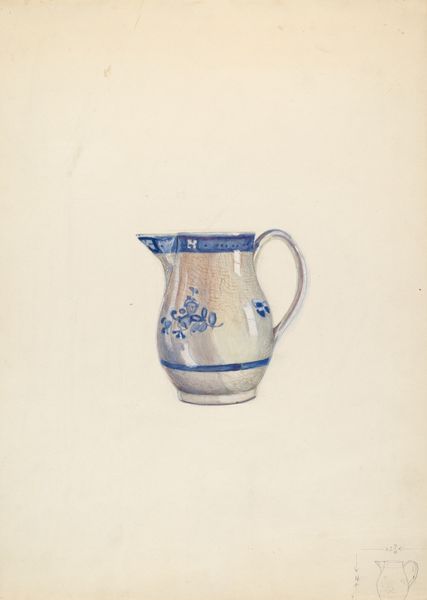
drawing, watercolor
#
drawing
#
negative space
#
watercolor
#
intimism
#
watercolor
Dimensions: overall: 29.3 x 22.5 cm (11 9/16 x 8 7/8 in.)
Copyright: National Gallery of Art: CC0 1.0
Curator: At first glance, this feels very intimate. I think it is due to the soft color and generous negative space. Editor: Indeed, let’s take a closer look at Michael Trekur’s "Creamer," dating from around 1936. Executed in watercolor and drawing, it depicts… well, a creamer. Curator: Haha! I like that. The way the deep cobalt blue sort of blooms outward. This artwork definitely evokes memories of quiet breakfasts and simple pleasures. I love the way it captures light—the way the patterns cast these subtle shadows. It also makes me want coffee and croissants. Editor: And, the fact that the pitcher is the only figure, smack-dab in the center, in this wide field of tan lends itself to a narrative where a seemingly mundane object assumes symbolic significance. The creamer isn't just a creamer; it represents something greater about domestic life and personal rituals. Curator: Ritual is the perfect word! In a world where we often seek grand gestures, it's powerful how art can remind us of the magic found in the small and ordinary. Milk itself has become a powerful symbol associated with early and fond memories of maternal love. I think we could almost imagine that simple domestic scenes as having deep and complex emotional histories. Editor: Right, it’s so beautifully rendered; yet simple enough that its effect remains accessible—almost dreamlike. And considering that Trekur created this piece in the mid-30s, during the Great Depression, it speaks to the value people placed on these little pockets of joy and normalcy. Curator: Perhaps it symbolizes hope in trying times? And it still speaks to us today about simplicity in art. Editor: Exactly. "Creamer" isn’t just a beautiful watercolor; it's an emotional touchstone that helps us see beauty in what we might otherwise overlook. Thank you, Trekur.
Comments
No comments
Be the first to comment and join the conversation on the ultimate creative platform.


